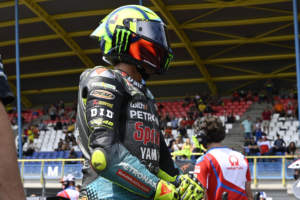Fabio Quartararo has become the latest in a small but illustrious list of riders to win a premier class world championship for Yamaha, after realising the potential he’s shown throughout his young career and taking the 2021 MotoGP crown with two races of the season remaining.
But while he might be Yamaha’s seventh world champion, he’s still got a long way to go to match the records of some of the incredible names who he joins on that shortlist.
With that in mind, we looked back at Yamaha’s previous premier-class champions and tried to figure out where the Frenchman fits into the pecking order – and perhaps see what he needs to do in future seasons to move further up the rankings.
7 – Giacomo Agostini
1975
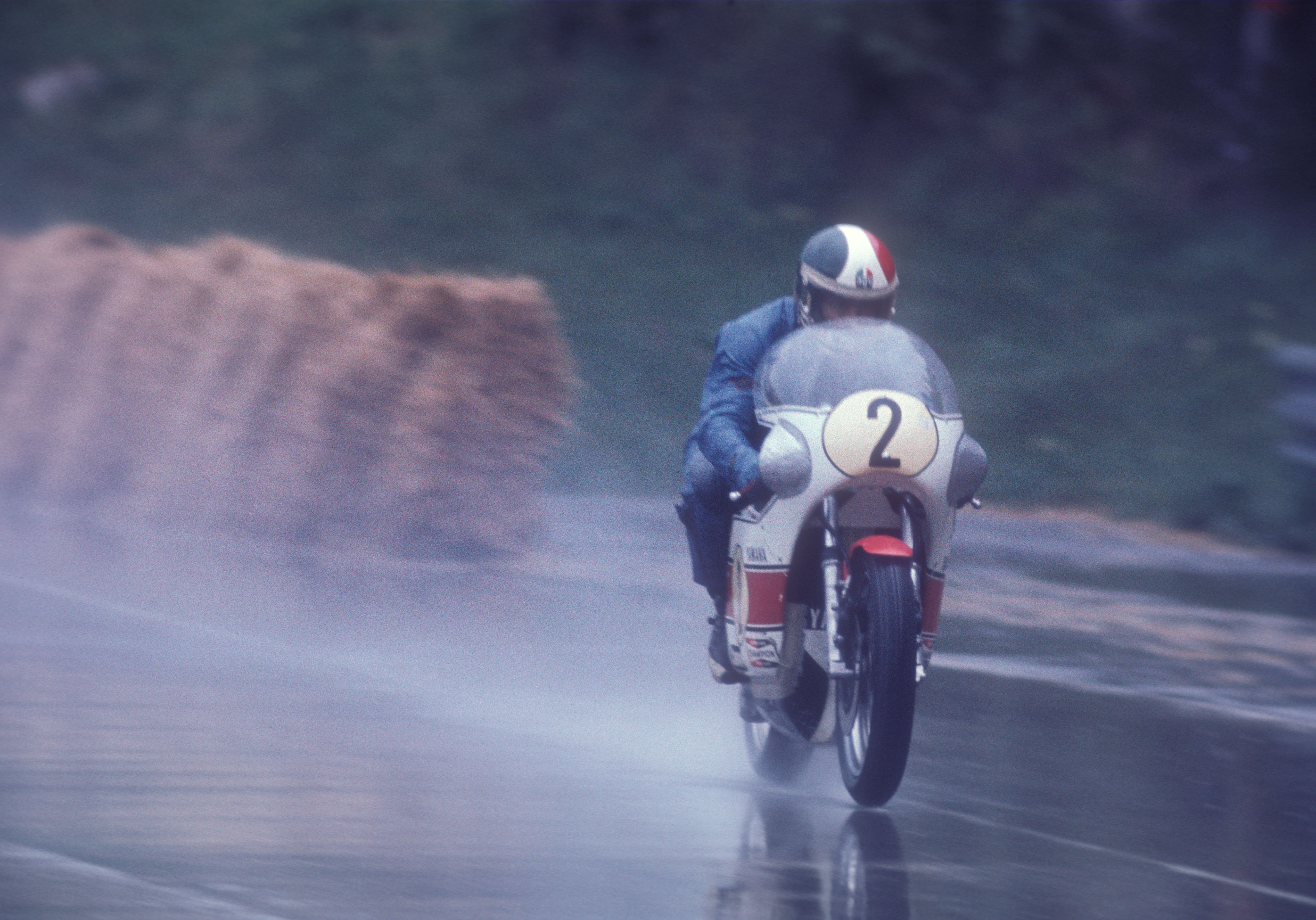
Widely acknowledged as a contender for the title of greatest of all time and still the holder of records for most wins, most podiums and most championships at 15, Giacomo Agostini is undoubtedly one of the greatest riders ever to sit up on a Yamaha.
But the thing is; his brief foray with the Japanese brand came only at the tail end of his career, not when he was at the sharp end, and despite winning the 500cc title in 1975 for them (as well as the 350cc title the year previously), the era of his greatest success comes not with them but with MV Agusta.
In fact, what was arguably his most successful legacy with Yamaha wasn’t as a rider but as a team boss. Taking over the running of the Marlboro Yamaha factory team in 1982, he went on to win three titles with Eddie Lawson – a better legacy than his brief two-year foray with them as a rider before defecting back to the Italian marque again.
6 – Fabio Quartararo
2021
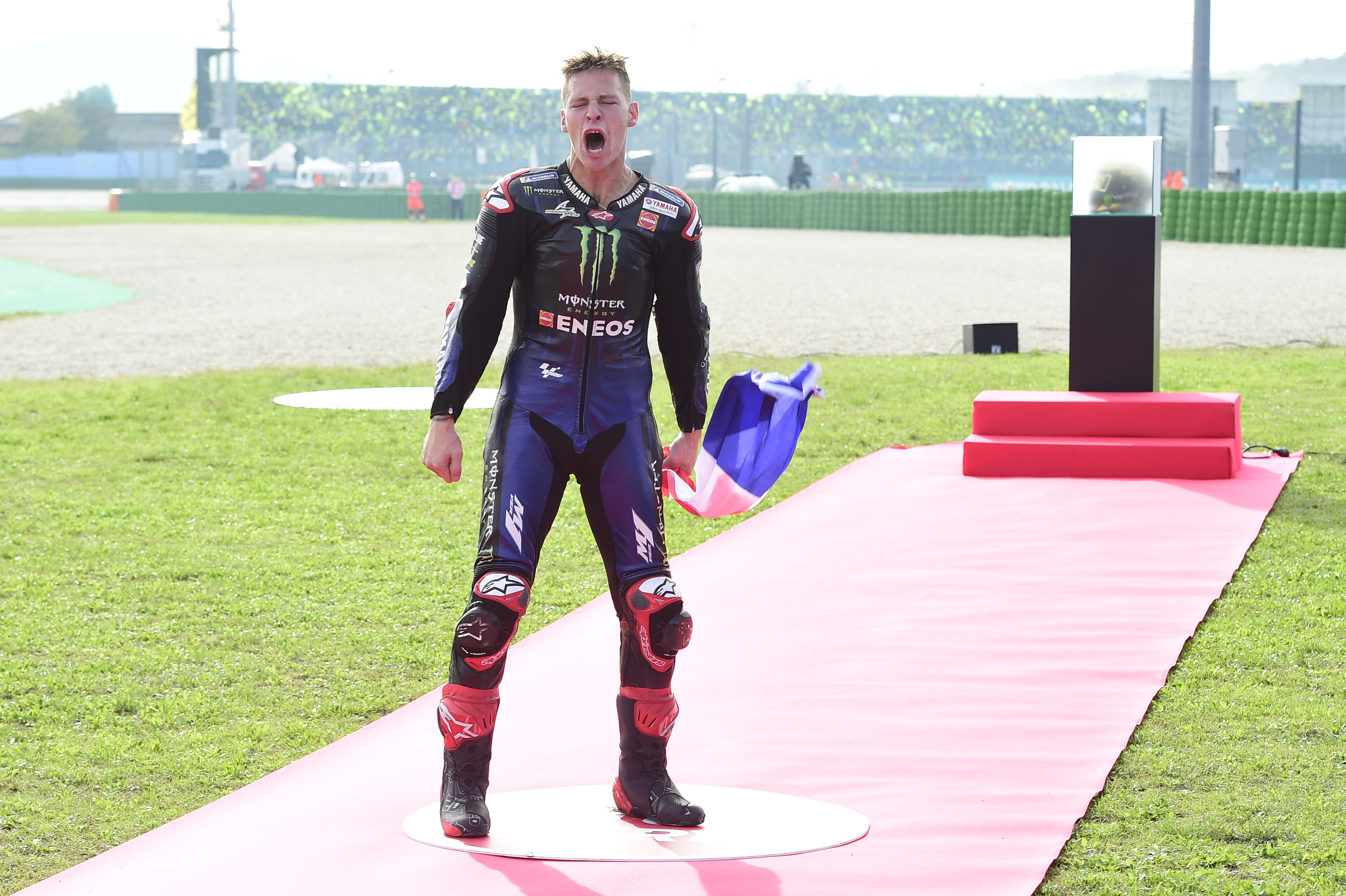
There is no doubt that Fabio Quartararo has a ton of talent; in fact, that’s something that’s been obvious since he first burst onto the scene in his Spanish championship days as a mere child. Yet it’s taken until 2021 to bring it all together, and that means that we have to be just a little bit cautious about what the future holds.
There’s a notable example in the form of 2020 world champion Joan Mir, with the Suzuki rider taking the title in exceptional circumstances – the middle of a global pandemic.
Obviously, Quartararo’s dominance in 2021 has stamped a much bigger mark on the series, but the MotoGP paddock isn’t quite back to normal just yet, and he needs to back up his result from this year to confirm his legacy.
Of course, that shouldn’t be too hard, given just how strong he’s been this year. Making a huge improvement to his own mentality and approach that’s been more important than any upgrade to the Yamaha M1, an improved bike for 2022 should in theory mean he’s even faster as he looks to defend his crown.
5 – Kenny Roberts
1978, 1979, 1980
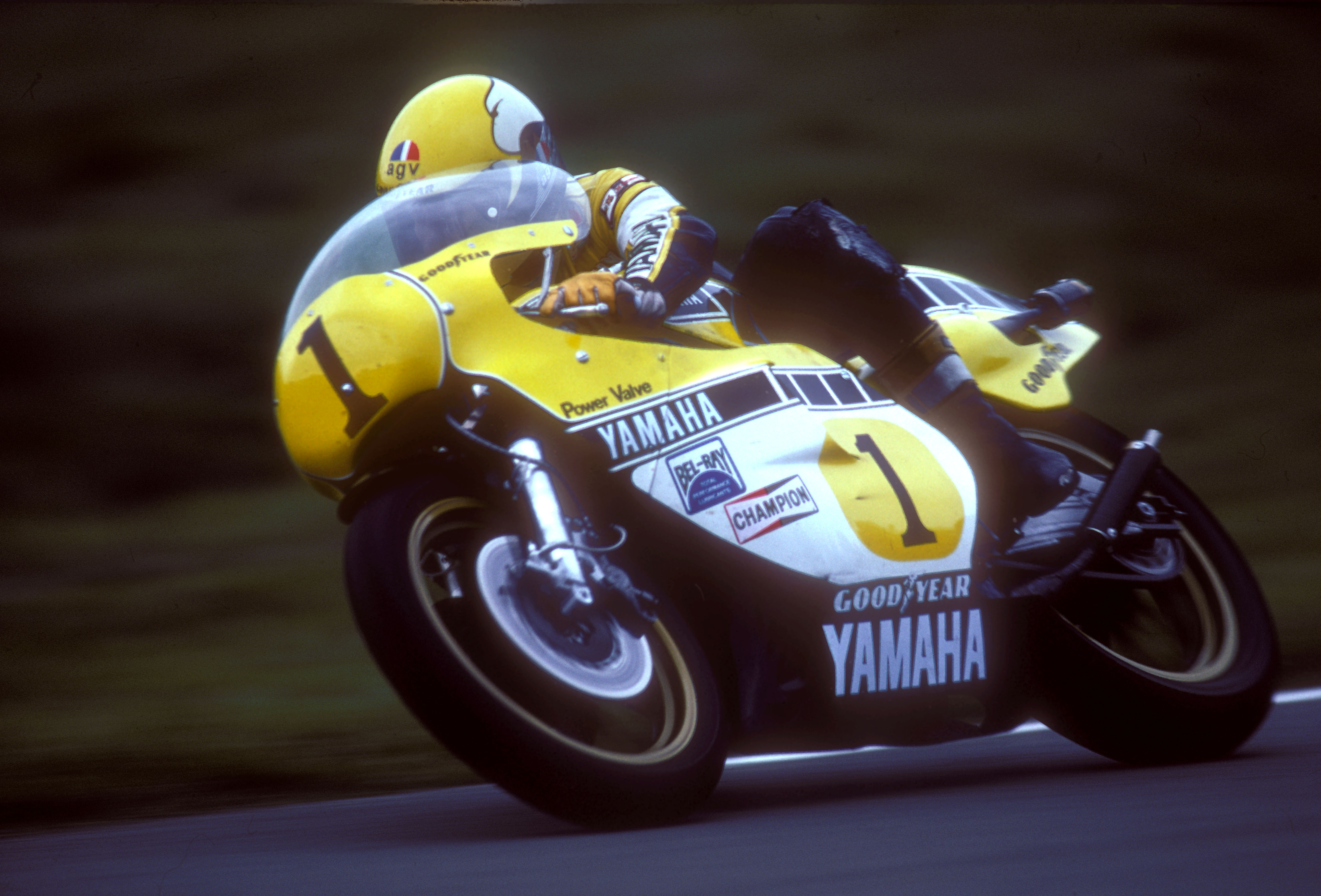
It’s not often that a rider switches not only continents but disciplines to prove a point, however, that’s exactly how Kenny Roberts burst onto the scene.
Getting bored of dominating flat track racing in the US and hearing Grand Prix champion Barry Sheene had dismissed him as ‘no threat,’ he rocked up and proved the Brit wrong with three consecutive championships, including in his rookie season.
Yet arguably while Roberts is one of Yamaha’s greats, he was in many ways the forefather of a new generation of American racing talent – and once the kids who followed him arrived, he was quickly overshadowed by them. The arrival of names like Mamola, Spencer and Lawson ended Roberts’ reign, and he retired after only six brief years in the series.
However, like Agostini before him, he switched to team management and continued his legacy with Yamaha as a boss, winning three championships with one of the Americans who followed in his footsteps: Wayne Rainey.
4 – Eddie Lawson
1984, 1986, 1988

One of the generation of American flat trackers who wanted to replicate the success of Roberts before, Eddie Lawson came onto the scene in 1983 – and showed his pace in only his second season with the 1984 title.
Riding for Agostini’s team and up against a grid stacked with the like of Mamola, Freddie Spencer, Wayne Gardner and the emerging talent of Wayne Rainey, three titles, a second (to Spencer) and a third (to Gardner) in five years is testament to his domination of the era.
And arguably, Lawson cemented his Yamaha legacy in 1989, as well, by switching from Yamaha to Honda, winning again, and silencing the critics who had previously insisted that it was only the combination of bike and team that was making him so fast – very much foreshadowing another name higher on this list…
3 – Jorge Lorenzo
2010, 2012, 2015

What makes Jorge Lorenzo stand out from the other names on this list is not just how much he won, but who he beat to do it, as the Spaniard took on the best in the world and stole their thunder.
He remains the only rider who has ever been able to beat Marc Marquez to a title across a full season. He took on Valentino Rossi at his prime, as his team-mate, and won. He challenged Casey Stoner and was victorious.
And it’s hard to believe that, had he stuck with Yamaha, more titles wouldn’t have come, either. It’s unfortunate that an ill-fated Ducati switch and subsequent Honda move brought on early retirement – because it’s not difficult to imagine him even higher on this list had he stayed put.
2 – Valentino Rossi
2004, 2005, 2008, 2009

When you’re unquestionably the fastest rider in the world at the time, and when you’ve won three titles in a row including the last ever 500cc crown and the first of the four-stroke era, what do you do next? Well, if you’re Valentino Rossi, you switch to a worse bike and you do it all over again.
It’s hard to forget the iconic scenes of a crying Rossi at Welkom in 2004, sitting next to his brand new M1 trackside after switching from Honda and winning back to back races on different manufacturers – before going on to do the same thing with titles.
The charismatic Italian didn’t quite have it all his own way in the following years, thanks to Nicky Hayden, Casey Stoner, Jorge Lorenzo and Marc Marquez, But, racking up the wins, the titles and the glory, he did more for the Japanese brand than any other rider ever has.
And remarkably it’s a legacy that continues, as he remains a Yamaha MotoGP rider, at least for two more races. Even an ill-fated Ducati move wasn’t enough to totally end his legacy with them, coming back in 2013 and not winning again but finishing runner-up another three times.
1 – Wayne Rainey
1990, 1991, 1992
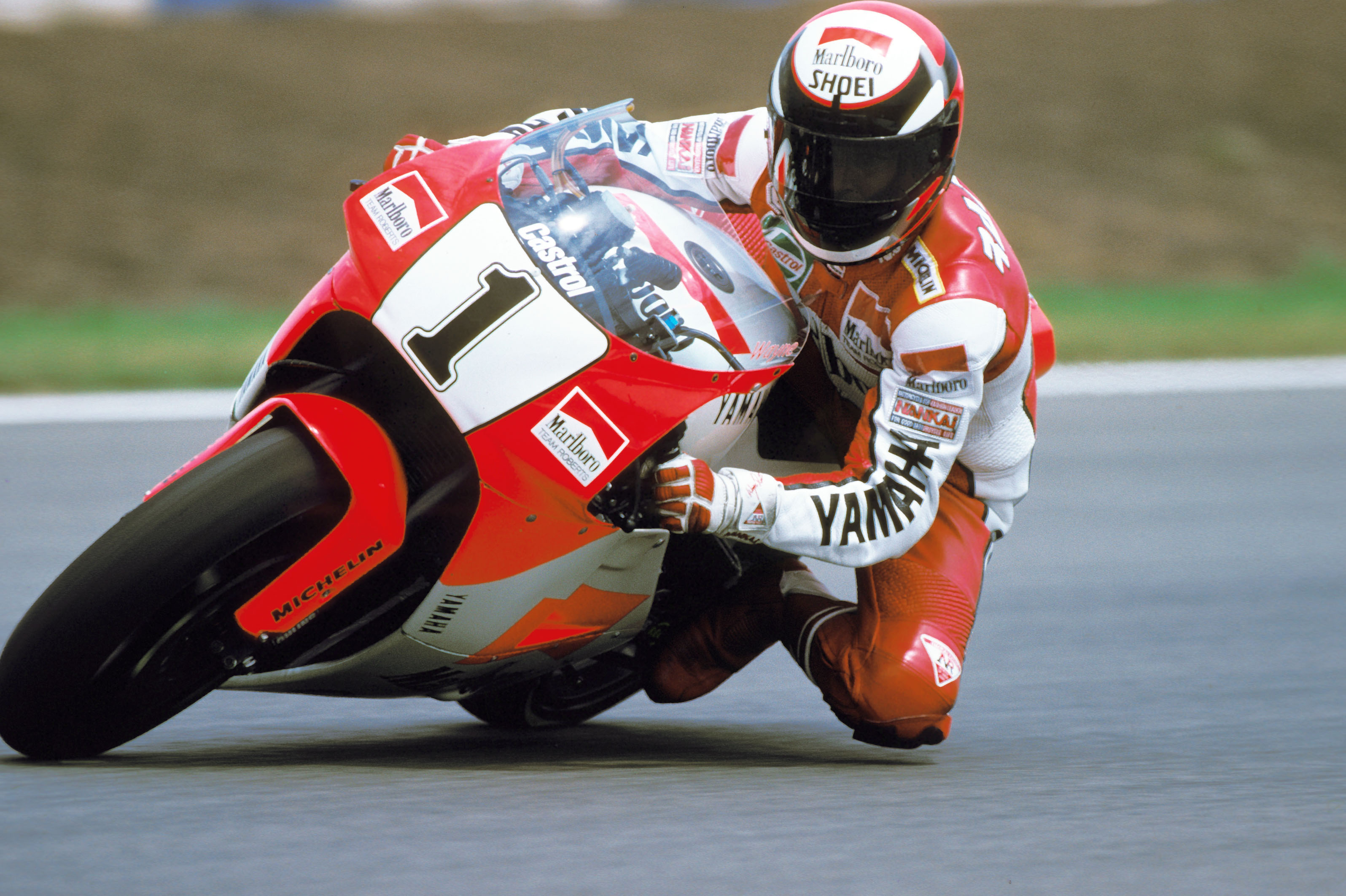
Wayne Rainey might not have won as many titles for Yamaha as Rossi and he might not have the incredible career palmeres as Agostini – but the potential that was cruelly snatched away from him means he did more than enough for them to earn the top spot on this list.
A Yamaha rider his whole Grand Prix career, he arrived on the scene from AMA flat track racing, spotted and promoted by Roberts. Struggling in his debut 250cc season, he moved to 500s for 1985 but didn’t make the immediate impact that many of his compatriots had upon their arrival.
Instead, working away to get faster and better, he was third as a rookie and second in his sophomore year before really showing his colours in 1990, taking the title from – and starting an incredible battle with – fellow American Kevin Schwantz. But despite the Texan’s best efforts, it was Rainey who was to dominate the era, winning again in 1991 and 1992, and enjoying a healthy lead with three races to go in 1993.
Unfortunately, his career and his title charge came to an end at Misano, when he slid out of the race and hit a high kerb designed for car racing, shattering his back and ending up permanently paralysed from the waist down. Schwantz went on to win the title, but, such was the fire of his battle with Rainey, he retired just two years later, the fire had gone from his own competitiveness.
But Rainey’s time with Yamaha wasn’t done despite his injuries. Following in the footsteps of the greats before him, when Roberts left Yamaha to set up his own manufacturer it was Rainey who took over the running of the factory effort.
Never quite enjoying the success of those before him as Yamaha entered a difficult period, he nonetheless took race wins and podiums with Loris Capirossi and Norifumi Abe before calling it quits in 1998.






